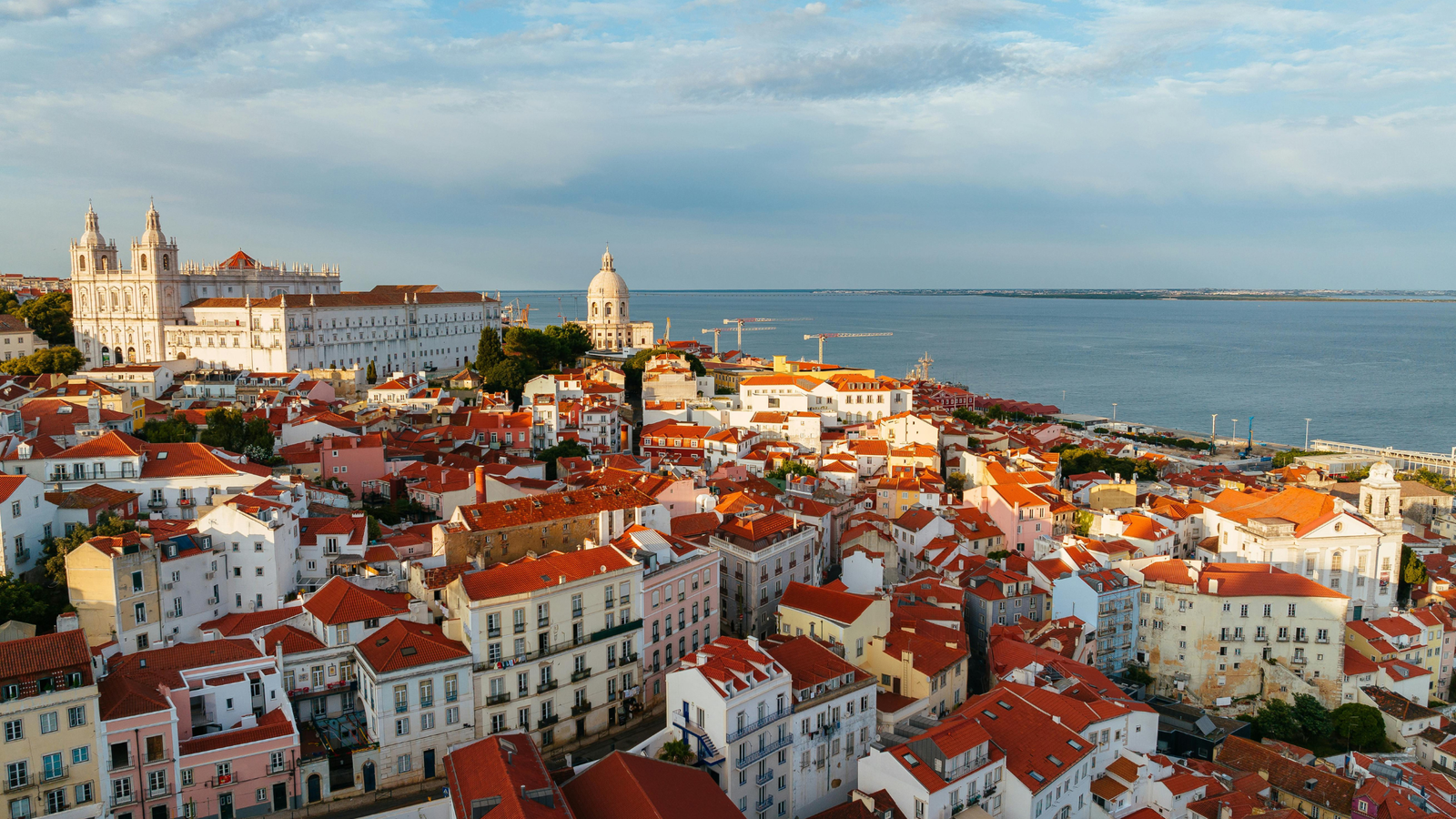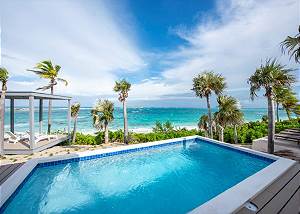
2025 Workation Hubs With Great Transit Car-Free Living in Lisbon, Valencia, and Porto
Everything you need for a month-long, no-car workation: metro-friendly neighborhoods, coworking near home, realistic 30-day budgets, refill stores, and rail day trips—plus cancellable booking links.
Disclosure: This guide uses affiliate links (flights, stays, eSIM, transfers). If you book via our links, Eco Nomad Travel may earn a commission at no extra cost to you.
Published: • Updated:
Key takeaways
- Pick the neighborhood first: aim for ≤12 minutes on foot to a metro/tram node, plus a grocery and park.
- Live near coworking: choose a desk ≤20 minutes on foot or tram. Time saved = more exploring.
- Transit passes simplify budgets: Lisbon Navegante, Porto Andante, and Valencia Metro + EMT caps keep costs predictable.
- Refill culture lowers plastic + cost: Iberian “a granel” shops make top-ups easy; carry a bottle/cup/containers.
- Rail day trips beat car rentals for most weekends; regional lines are your carbon-smart backbone.
How we define a “no-car” workation
- Access: metro/tram ≤12 min walk; frequent service (≤7–10 min headways daytime).
- Daily life: coworking ≤20 min walk/tram; grocery, bakery, and green space within 800 m.
- Weekend mobility: regional rail reachable without bus transfers; day trips under 90 minutes preferred.
- Comfort & safety: lit sidewalks, crosswalk density, and bike lanes for short hops.
Prep your kit: eco-friendly travel kit · zero-waste packing · low-impact habits
Lisbon: metro-first living on hills & viewpoints
Neighborhoods near metro/tram
- Baixa-Chiado / Rossio: Blue/Green lines + rail to Sintra; cafés and plazas at your door.
- Saldanha / Picoas: flat grid, Red line to the airport, easy tram links.
- Alameda / Arroios: value zone on Green/Red; markets and budget eateries.
- Parque das Nações: ultra-flat, riverfront paths, Red line; modern apartments and coworking.
Airport in 20–25 min via Red line; avoid steep alleys if you roll a carry-on daily.
Coworking near home
- Baixa/Rossio: compact hubs around Praça da Figueira and Restauradores.
- Saldanha: business-district spaces with monthly passes; plenty of lunch options.
Where to buy refills
- Search “a granel” bulk stores in Arroios, Anjos, and Marvila (detergent, shampoo, pantry).
- Tap refill fountains in river parks; cafés are bottle-friendly.
Best rail day trips
- Sintra (40–45 min from Rossio): palaces + forest hikes.
- Cascais (40 min from Cais do Sodré): beaches + boardwalk.
- Setúbal / Arrábida (55–70 min): cliffs, coves, seafood.
Lisbon 30-day budget (solo, mid-range)
- Accommodation (studio/apt-hotel, central): €1,200–1,800
- Coworking hot desk: €120–200
- Groceries + cafés: €350–500
- Transit (Navegante municipal pass): ~€40
- Mobile data (eSIM): €12–25
- Estimated total: €1,722–2,565
Valencia: flat bikes, shady parks, beach trams
Neighborhoods near metro/tram
- Ruzafa / Eixample: cafés & markets; walk to Xàtiva/Colón metro.
- El Pla del Remei: elegant blocks; short walk to Colón.
- Benimaclet: student vibe; tram + metro intersect.
- El Cabanyal / Malvarrosa: near beach trams; choose quieter streets back from the waterfront.
Coworking near home
- Ruzafa & Eixample corridors have multiple monthly-pass spaces.
- Benimaclet offers budget desks close to tram nodes.
Where to buy refills
- Plenty of bulk stores (a granel) in Ruzafa and El Carmen.
- Tap water is drinkable; use a filter bottle if you’re picky about taste.
Best rail day trips
- Xàtiva (50–60 min): castle hikes, old town.
- Castellón / Benicàssim (1–1.5 h): coast & piney trails.
- Gandía (1 h): sandy beach, easy regional trains.
Valencia 30-day budget (solo, mid-range)
- Accommodation (apt-hotel, central): €1,000–1,500
- Coworking hot desk: €90–160
- Groceries + cafés: €320–480
- Transit (metro + EMT caps): ~€35–45
- Mobile data (eSIM): €12–25
- Estimated total: €1,457–2,210
Porto: stairs, azulejos—and an easy metro spine
Neighborhoods near metro/tram
- Trindade / Aliados: hub where lines converge; walkable to everything.
- Cedofeita: galleries + cafés; short walk to Lapa/Trindade.
- Bonfim: value zone with level streets; close to 24 de Agosto/Campanhã.
- Boavista (Casa da Música): wide sidewalks; metro + airport links.
Coworking near home
- Trindade/Aliados: several spaces within 10 minutes on foot.
- Boavista: modern business spaces near Casa da Música.
Where to buy refills
- Bulk shops around Cedofeita and Bonfim; many sell detergents and pantry goods by weight.
- Excellent municipal water—pair with a refillable bottle.
Best rail day trips
- Braga (55–60 min): historic center + Bom Jesus stairs.
- Guimarães (1 h): medieval streets & castle.
- Aveiro (1–1.25 h): canals, boardwalks, salt pans.
Porto 30-day budget (solo, mid-range)
- Accommodation (apt-hotel, central): €1,050–1,550
- Coworking hot desk: €90–150
- Groceries + cafés: €320–470
- Transit (Andante pass zones): ~€40–50
- Mobile data (eSIM): €12–25
- Estimated total: €1,512–2,245
30-day budget comparison (solo, mid-range)
| Category | Lisbon | Valencia | Porto |
|---|---|---|---|
| Accommodation | €1,200–1,800 | €1,000–1,500 | €1,050–1,550 |
| Coworking | €120–200 | €90–160 | €90–150 |
| Groceries + cafés | €350–500 | €320–480 | €320–470 |
| Transit pass | ~€40 | ~€35–45 | ~€40–50 |
| eSIM | €12–25 | €12–25 | €12–25 |
| Estimated total | €1,722–2,565 | €1,457–2,210 | €1,512–2,245 |
Assumptions: studio/apt-hotel within 12-min walk of metro/tram; hot-desk pass; mostly home cooking + cafés; transit pass; eSIM.
Live deal widgets
These load live pricing (give them a second):
Trip stack: flights, stays & eSIM
Plan greener weekends: night trains in Europe · train vs plane emissions 2025
FAQ (2025)
Is Lisbon too hilly for a no-car month?
Choose flatter grids (Saldanha, Picoas, Parque das Nações) and rely on metro/elevators. Living near Red/Blue/Green lines reduces hills.
Valencia or Porto for a first workation?
Valencia is flattest with big parks and beach trams; Porto has hills but a clear metro spine and great day trips. Both are strong without a car.
Do I need a bike?
Nice in Valencia. In Lisbon and Porto, short tram/metro hops usually replace bike needs; hills and cobbles can be tricky.
How can I cut plastic on a workation?
Bring a bottle, cup, cutlery, and nesting containers. Iberian “a granel” bulk shops make refilling easy; choose apartments near refill points. See our eco-friendly travel kit.
Final thoughts: the Iberian way to live well without a car
Workations flop when commuting eats your hours. Iberia flips that script. In Lisbon, Valencia, and Porto you can stack a short, reliable commute on top of a compact daily life: desk, bakery, and park within ten minutes; a metro hub for everything else. That design—not gadgety slogans—turns a month into a rhythm you’ll actually keep: morning tram, daylight work blocks, sunset walks, weekend trains.
If you remember only three moves, make them these: 1) book the neighborhood, not the listing; 2) put your desk within walking distance; 3) ride rail for weekends. Then layer simple, plastic-light habits (refill bottle, bulk shops, UPF layers at the beach) and you’ll lower costs and footprint without thinking about it.
When you’re ready to expand the loop, use night trains or regional lines instead of short flights; Iberia is stitched together by dependable rail corridors. And if a villa outside the core tempts you, price the hidden car costs—time, taxis, and parking—against a smaller flat on a metro line. Nine times out of ten, the “boring” central option is where the magic (and savings) lives.
What actually makes a neighborhood “workation-proof” in 2025?
A true no-car base compresses all dailies—desk, groceries, pharmacy, cafés, parks—into an 800-meter circle. It has redundant transit (two lines or a line + frequent trams), safe crossings, flat or manageable gradients, and quiet back streets for sleep. You’ll find this grid in Baixa-Chiado/Saldanha (Lisbon), Ruzafa/El Pla del Remei (Valencia), and Trindade/Cedofeita (Porto). That’s why our budgets assume central apartments: paying a bit more for proximity saves more than it costs in time, taxis, and stress.
Carbon-smart weekends mean regional rail first. From Lisbon: Sintra and Cascais; from Valencia: Xàtiva/Gandía/Benicàssim; from Porto: Braga/Guimarães/Aveiro. Pair those with refill culture and compact packing—see our eco-friendly travel kit and zero-waste packing guide—and you’ve got a month that’s easier, cheaper, cleaner.
Seasonality & pricing watch (when to book in 2025)
Shoulder seasons win for car-free life: April–June and Sept–early Nov balance lower accommodation pressure with full transit frequencies and long daylight. July–Aug pushes prices near beaches and old towns; winter brings cheaper stays but shorter daylight and some service reductions.
Booking cadence we recommend
- Accommodation (central, transit-served): lock 30–60 days out; expand radius by one station before raising budget.
- Coworking: confirm a hot-desk weekly pass first; upgrade monthly after a 2–3 day test.
- Rail weekends: buy regional tickets a few days ahead; night-trains earlier—see night trains Europe.
Minimize flights and compare emissions: train vs plane (2025). Pack plastic-light: eco travel kit · zero-waste packing.
Best neighborhoods for a no-car month (quick picks)
- Baixa-Chiado / Rossio (Lisbon) — Blue/Green lines + Rossio rail; cafés and plazas within minutes.
- Saldanha / Picoas (Lisbon) — flat grid; Red line to airport; business-district coworking.
- Ruzafa / El Pla del Remei (Valencia) — markets, cafés; walk to Xàtiva/Colón metro.
- Benimaclet (Valencia) — tram+metro intersect; student vibe; budget coworking.
- Trindade / Aliados (Porto) — metro hub; walkable spine for daily errands.
- Cedofeita (Porto) — galleries + cafés; short walk to Lapa/Trindade.
Tip: aim for ≤12-minute walks to a metro node; prioritize quiet side streets for sleep.
How to buy a monthly transit pass (Lisbon, Valencia, Porto)
- Find the nearest staffed metro/transport desk (bring passport + a small ID photo if requested).
- Ask for a reloadable card + monthly zone or municipal pass (Lisbon: Navegante; Porto: Andante; Valencia: Metro/EMT caps).
- Pay with card; keep the receipt. Add an SMS/e-mail if available so you can top-up online.
- Validate on entry and transfers. If gates don’t open, try a different validator then visit the desk.
Common mistakes (and easy fixes)
- Booking “near metro” that’s actually a steep climb. Check street gradients on satellite view + Street View.
- Picking a cool café strip but not the quiet back street. Choose one block off the nightlife spine for sleep.
- Choosing a cheap coworking far away. The “cheap” desk costs more in time/transit. Pay for proximity.
- Forgetting refill options. Search “a granel” + district; bring bottle/cup/containers from our eco kit.
Printable checklist: 7 steps to a smooth, no-car month
Methodology (data & assumptions)
Budgets are compiled from live accommodation quotes for central, transit-served neighborhoods; typical coworking monthly rates; municipal transit pass pricing (Navegante, Andante, Metro/EMT caps); and moderate grocery/café spending patterns for a single remote worker. We assume apartments within a 12-minute walk of a metro or tram node and a coworking desk within a 20-minute walk or one short tram/metro hop. Rail day trips are chosen under ~90 minutes to keep weekends relaxed and car-free.
Display currency defaults to USD for US readers using a transparent EUR→USD factor (editable in code). For context and local accuracy, source prices remain in EUR and can be toggled back on page.
For lower-carbon planning and realistic emissions comparisons, see our companion guides: Train vs Plane Emissions 2025 and Night Trains Europe 2025.
Explore more on Eco Nomad Travel
- Night trains in Europe (2025)
- Train vs plane emissions (2025)
- Eco-friendly travel kit (2025)
- Reef-safe sunscreen guide (2025)
- Zero-waste packing for nomads
- Eco-friendly travel tips


